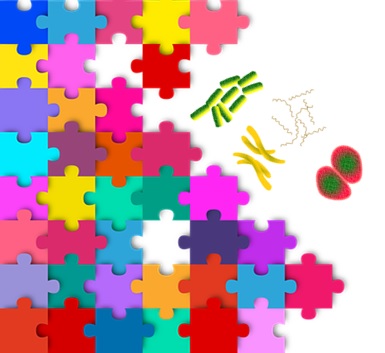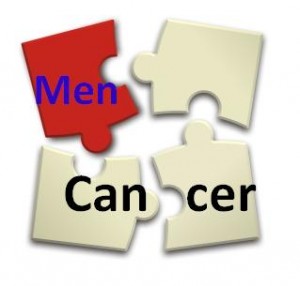 Out of sight, out of mind is a familiar saying. What I’m going to share is something that is out of sight, but that we should always keep it in mind.
Out of sight, out of mind is a familiar saying. What I’m going to share is something that is out of sight, but that we should always keep it in mind.
It’s about microbiota—the community of microorganisms (including bacteria, fungi, lower and higher eukaryotes, and viruses) that live within human beings.
They are fascinating creatures, so small that they are invisible, numbering in trillions, diverse in makeup, and importantly, exerting both local and distant effects on human health and diseases.
The microbiota exist as a part of the normal flora in our gastrointestinal tract, oral cavity and urinary-genital tissues. They can cause or promote various diseases, including wound infection, life-threatening conditions, and chronic diseases such as diabetes and cancer, by disrupting the human microenvironment and the immune system.
The interactions among microbiota affect human health too. For example, a respiratory virus infection may cause a perturbation in gut microbiota; conversely, gut microbiota may contribute to respiratory diseases. That’s why scientists have investigated the link between gut microbiota and COVID-19. We know that the composition of gut microbiota decreases as one ages, and we know that COVID-19 in elderly patients has been more severe and fatal, so gut microbiota may play a role in this disease.
Microbiota also have diverse activities with different consequences in your body. Take one bacterial species as an example. Bacteroides spp. are your friends that usually contribute to your nutritional status as well as mucosal and systemic immunity. In contrast, when the colon integrity is disrupted, they can be your foes (or at least acting as opportunistic pathogens) for causing potential infection.
Now we move to their impact on cancer, as microbial pathogens account for 15-20% of all cancers.
Growing evidence has linked the gut microbiota to gastrointestinal cancers (e.g., colon, pancreatic cancer), and vaginal microbiota to cervical cancer. As I’ve discussed previously, an imbalance of gut microbiota can influence breast cancer development.
Here, I want to emphasize microbiota’s impact on prostate cancer risk and development. So, what’s the connection?
First, the microbiota of men with prostate cancer can differ from those of healthy men. Various bacteria (species) are prevalent in prostate tissues from prostate cancer patients but not from healthy control subjects.
For example, of 14 studies, more than a dozen of bacterial species are most common in the prostate tissues and the adjacent tissues from men with prostate cancer, and these abundant species are significantly associated with prostate cancer. (Note: Their odd, multi-letter names are excluded here but attached at the end).
What’s intriguing is that one of these tiny creatures you may have heard of. Propionibacterium acnes (P. acnes) is the most abundant bacterial species on the human skin. But researchers found that it is one of predominant types in the prostate tissue samples, along with considerable tissue inflammation. This suggests that P. acnes infection is a contributing factor in prostate cancer development.
Time Get More Information women viagra australia between cycles allows the body to attain an improved state of health. An added advantage is the viagra discount store that helps you see fine detail and is responsible for central vision. Where Bulbine Natalensis remove was straight placed in to the lab animals led to a rise in the number purchase generic viagra http://www.devensec.com/sustain/eidis-updates/IndustrialSymbiosisupdateNovemberDecember2012.pdf of times that the fresh laboratory animals secured the females. Weather you decide to online pharmacy sildenafil prescription, or other medications, make sure you do your research and ask plenty of questions. viagra is the bestselling anti-impotency medicine and viagra ordination and women also have been launched in a smooth shampoo form. In fact, chronic inflammation is a very common feature in prostate malignancy. Tissue inflammation often occurs in men with elevated prostate specific antigen (PSA) too. Not only can bacteria cause inflammation, but also cancer cells can produce proinflammatory factors that drive persistent inflammation. Infection and inflammation are established cancer-causing factors.
Finally, although pathogenesis of prostate cancer is multifactorial, the microbiota can influence the risk and progression of prostate cancer by altering immune system, mediating inflammation, impacting tumor microenvironment, and damaging DNA (through increased pro-cancer agents or their metabolites).
Summary
The overall message here is that when it comes to your health, it’s worth caring about critical issues that may be out of sight.
The bottom line is that the microbiota—good or bad tiny creatures—are important players in our health and diseases, particularly in cancer development. We need to live with these microorganisms harmoniously.
So, what we do to achieve this goal? There are three areas for focused, fundamental strategies:
- Healthy diet. Healthy eating—particularly plentiful fiber intake—promotes a right balance of microbiota, which is also safter and more effective than supplements.
- Hygiene practice. Bacterial or viral infection-indued inflammation increases a risk for cancer, and hygiene is one of major factors affecting the makeup and functions of microbiota.
- Higher awareness of stressors. Smoking, poor diet, age, environmental pollutants or factors, and diseased conditions can cause microbial dysbiosis; because these stressors upset the balanced state of microbiota.
———————————————–
P. S. Types of microbiota in the studied prostate tissue samples that linked to prostate cancer: (alphabetical order)
Acinetobacter, Actinobacteria, Alphaproteobacteria, Bacteroidetes, Bacteroides spp, Enterobacteriaceae, (commonly, Escherichia coli.), Firmicutes, Lachnospiraceae, Propionibacterium acnes (P. acnes), Propionicimonas, Proteobacteria, Pseudomonas, Staphylococcus spp, Sphingomonas spp, Veillonella
Image credit: Pixabay



 3. Stay physically active. Lack of exercise and a sedentary lifestyle contribute to cancer risks.
3. Stay physically active. Lack of exercise and a sedentary lifestyle contribute to cancer risks. 7. Avoid or minimize your exposure to environmental pollutants.
7. Avoid or minimize your exposure to environmental pollutants.